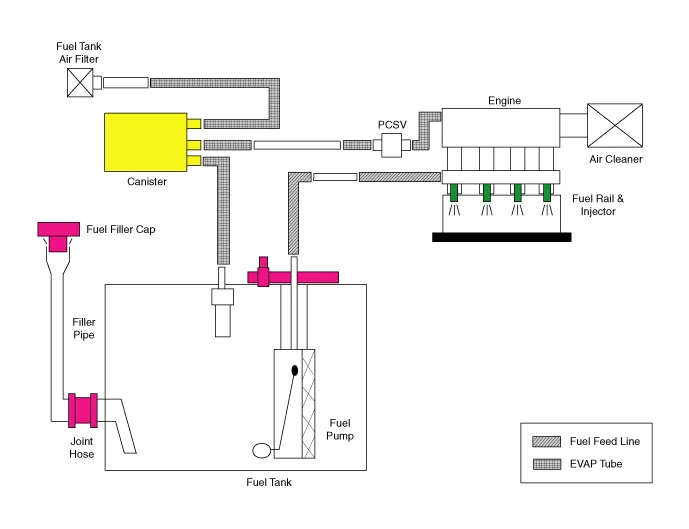Hyundai Ioniq (AE): Evaporative Emission Control System / Schematic diagrams
| Schematic Diagram |

Removal1.Turn ignition switch OFF and disconnect the negative (-) battery cable.2.Remove the fuel tank.(Refer to Engine Control/Fuel System - "Fuel Tank")3.
Other information:
Hyundai Ioniq (AE) 2017-2022 Service & Repair Manual: emperature Control Actuator. Repair procedures
Inspection1.Turn the ignition switch OFF.2.Disconnect the temperature control actuator connector.3.Verify that the temperature control actuator operates to the cool position when connecting 12V to terminal 3 and grounding terminal 7.Verify that the temperature control actuator operates to the warm position when connected in reverse.
Hyundai Ioniq (AE) 2017-2022 Service & Repair Manual: Mode Control Actuator. Repair procedures
Inspection1.Turn the ignition switch OFF.2.Disconnect the mode control actuator connector.3.Verify that the mode control actuator operates to the defrost mode when connecting 12V to terminal 3 and grounding terminal 4.Verify that the mode control actuator operates to the vent mode when connected in reverse.
Categories
- Manuals Home
- Hyundai Ioniq Owners Manual
- Hyundai Ioniq Service Manual
- Transmission Gear Oil. Repair procedures
- How to Connect Portable Charger (ICCB: In-Cable Control Box)
- Hybrid Control System
- New on site
- Most important about car
